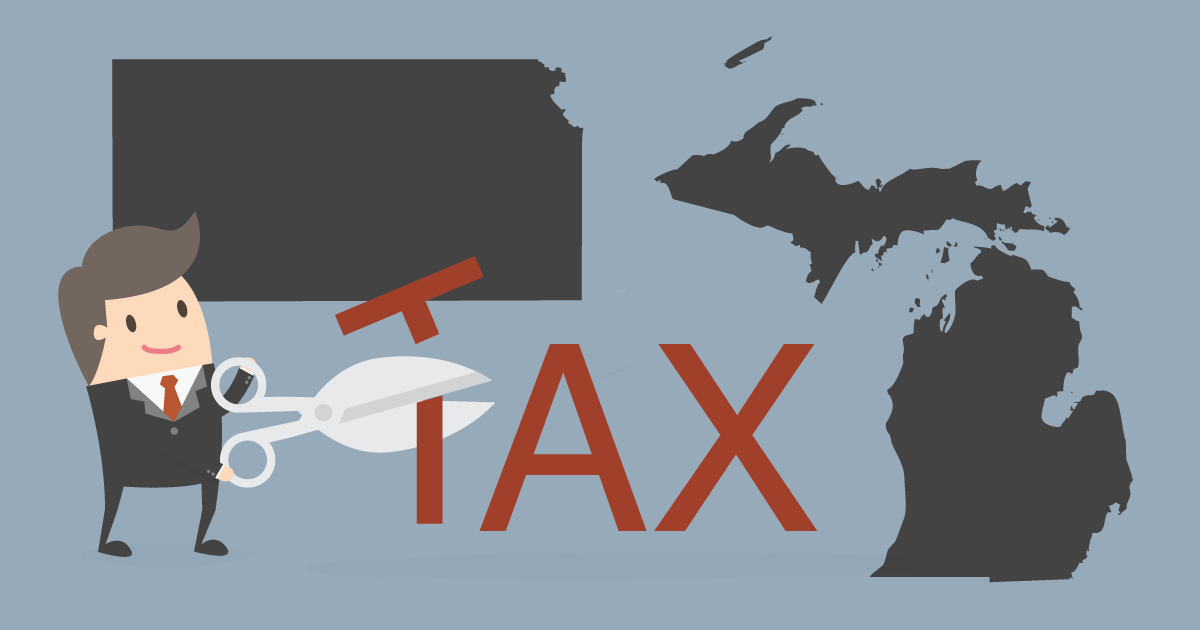Amazing Bloomberg column entitled Kansas Ends Bad Economic News by Not Reporting It. Its written by Barry Ritholtz, founder of Ritholtz Wealth Management and formerly chief executive and director of equity research at FusionIQ, a quantitative research firm.
Turns out that Kansas has canceled its quarterly reports on the state’s economy. Why? As Ritholtz reports: “The problem was that the reports didn’t match the governor’s predictions for the state’s soon-to-be-booming economy.”
As we have explored previously (here and here) Kansas embarked on what their Governor Sam Brownback called a real life experiment of whether deep tax cuts lead to leading edge economic growth. The results as Ritholtz writes:
In May 2012, he (Brownback) signed the bill into law. It initially lowered the top personal tax rate to 4.9 percent (it’s now 4.6 percent) from 6.45 percent, but most importantly, it eliminated income tax on profits for owners of limited liability companies, subchapter S corporations and sole proprietorships.
Give Brownback credit for passing the exact legislation he had promised.
The results, however, haven’t been very encouraging. Indeed, since the tax cuts were passed, almost nothing has gone as promised in Kansas. Revenue plunged and the state resorted to pulling money out of its rainy-day fund to plug the holes. A number of critical services, including for road maintenance and schools, were cut. The business climate has been poor, and the economy has lagged behind neighboring states as well as the rest of the country.
… The math is simple: Tax cuts tend to reduce revenue, in Kansas’ case much more than expected. To change people’s behavior requires more substantial incentives than changing things by a few percentage points. The reduced revenue led to spending cuts that lowered quality of life. In response, rising numbers of people and companies have left the state.
Ritzholtz details the economic underperformance of Kansas since the tax cuts:
- Kansas’ gross state product fell behind the six-state region and the nation for the third straight year. (Kansas’ gross state product grew at a faster rate when compared to the region and the nation in three of the five years before Brownback took office in 2011).
- Private industry wages in Kansas grew at a slower pace last year than they did in the region and the U.S. — as they did during the past five years.
- The number of private business establishments in Kansas trailed both the region and the nation for the last year, again continuing a five-year trend.
Why did the experiment fail? As Ritholtz explained in an earlier Bloomberg column:
Alas, reality trumps theory. As we have seen almost every time this thesis has been put into practice, it fails. The tax cuts don’t magically kick the economy into higher gear and the government ends up short of money. Remember former President George W. Bush and his tax cuts? Same deal.
… The bottom line: The results from the economic laboratory known as Kansas are in. Supply side theory — and Kansans — lost. The only question is whether those like Brownback have learned anything.
Why Kansas matters to Michigan is many here are still pushing tax cuts––particularly business tax cuts––as the magic elixir that will fixed our economic problems. For example this from a recent Business Leaders for Michigan (BLM) email:
… But with average unemployment levels and per capita income $10,000 below Top Ten states, we need to do more. The fact is that many of the states we compete with have business climates as good or better than ours, plus they have tools we don’t have to grow good jobs. For example, we’re one of only two states with a corporate income tax and no tax credits that reward job creation. Further, our competitors spend up to seven times more than we do to incent job creation.
Its like the last six years didn’t happen. Michigan, like Kansas, put in place an economic growth strategy based largely on business tax cuts. A huge nearly two billion dollars annual tax cut that eliminated taxes on most Michigan businesses.
The results: Michigan for the first time ever with a booming auto industry is a low-prosperity state. Eleven percent below the national average in per capita income. The last time the auto industry was booming in 2000 we were basically at the national average in per capita income.
BLM deserves credit for establishing as a goal eliminating the $10,000 gap in per capita income between Michigan and top ten states. But the data are clear: tax-cut-driven state policy is not the path to achieving that goal.







